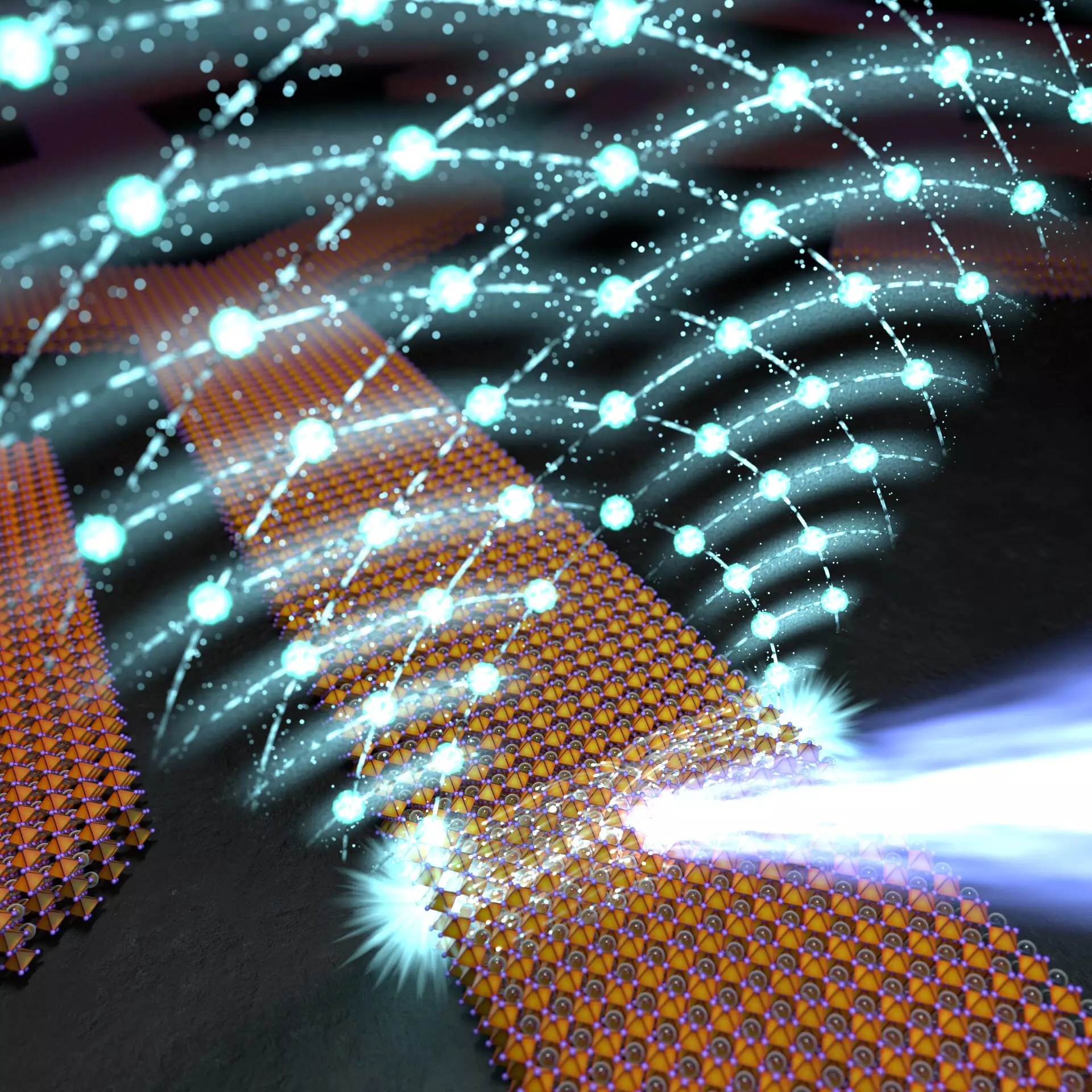The field of photonics is rapidly evolving, with integrated photonic circuits poised to significantly alter the landscape of both classical and quantum signal processing. A groundbreaking study conducted by scientists from the University of Warsaw in collaboration with international researchers has explored the potential of perovskite crystals in photonic applications. Their findings, published in the journal *Nature Materials*, open up new avenues for creating highly functional, temperature-stable optical devices that incorporate nonlinear effects to enhance signal processing capabilities.
The Significance of Perovskite Crystals
Perovskites are a class of materials known for their exceptional optical properties, making them suitable for various applications ranging from solar cells to lasers. Notably, the research emphasized cesium-lead-bromide (CsPbBr3) as a premier semiconductor for optical purposes, primarily driven by its high exciton binding energy and oscillator strength. Such characteristics facilitate increased light interactions, resulting in significant energy savings for nonlinear light amplification. Professor Barbara Piętka, a leading figure in this research, highlighted the versatility of perovskite materials; they can be crafted into polycrystalline layers, nano- and micro-crystals, or even bulk crystals, allowing for extensive applications within photonics.
A notable aspect of this research is the innovative methods utilized for the synthesis of perovskite crystals with specific dimensions and geometries. The researchers employed a microfluidic approach that permitted the growth of crystals within polymer molds that can be imprinted with diverse shapes. This method not only allows for precise control over crystal morphology but also ensures scalability and repeatability—two essential factors for commercial viability.
The combination of controlling solution concentration and maintaining saturated solvent vapor atmospheres was vital for achieving high-quality single crystals. Moreover, the use of nearly atomically smooth gallium arsenide templates enabled the formation of various crystal shapes, ranging from sharply defined edges to smooth curves. This level of control enriches the potential integration of these perovskite structures into existing photonic devices.
Understanding Nonlinear Effects: The Edge Lasing Phenomenon
A key breakthrough of this research is the observation of polaritonic lasing from the edges and corners of microwires. This emission results from the establishment of a non-equilibrium Bose-Einstein condensate of exciton-polaritons—quasiparticles that exhibit dual characteristics of both light and matter. Unlike traditional lasing mechanisms, which typically rely on weak coupling and the Purcell effect, this novel phenomenon is underpinned by strong light-matter interactions.
Remarkably, the emitted wavelengths can be modulated through these interactions, suggesting enhanced tuning capabilities and the potential for developing sophisticated light sources. The coherence observed in the emission signals, verified through advanced spectroscopic techniques, suggests a coherent polariton condensate that extends macroscopically, significantly propelling research in photonic signal processing.
The researchers employed sophisticated simulations, including solving Maxwell’s equations for complex three-dimensional structures, to explore how natural resonators affect light emission. These models provided insights into how photonic modes interact with the unique geometries of the perovskite structures, revealing pathways for optimizing device designs for both classical and quantum applications.
Such theoretical frameworks are essential for predicting how these newly synthesized materials might behave in real-world scenarios. As Dr. Andrzej Opala articulated, the interplay between numerical aperture and spatial confinement within the microwires is crucial for understanding observed nonlinear effects. This analytical foundation lays the groundwork for future advancements in compact “on-chip” systems.
The implications of these findings extend far beyond academic interest, hinting at practical applications that could revolutionize optical technologies. Researchers believe that the insights gained could lead to next-generation devices capable of handling single-photon operations, integrating elements like nanolasers with waveguides on a single chip. Such developments could fundamentally enhance computing power, particularly in the realms of quantum computing and advanced communications technologies.
Furthermore, the compatibility of perovskite structures with established silicon technology enhances their commercialization potential, positioning them as viable candidates for integration into existing optical infrastructures. As Professor Michał Matuszewski noted, the discoveries from this research could propel perovskite crystals to the forefront of nonlinear photonics, enabling solutions that operate efficiently at room temperature.
The innovative work conducted by the researchers from the University of Warsaw and their international collaborators represents a significant leap forward in the field of nonlinear photonics. By harnessing the unique properties of perovskite crystals, they have opened new avenues for developing adaptable, efficient, and powerful optical devices. As research in this domain continues to progress, the realization of integrated photonic circuits could define the next era of optical technology, merging efficiency with unprecedented capability.


Leave a Reply